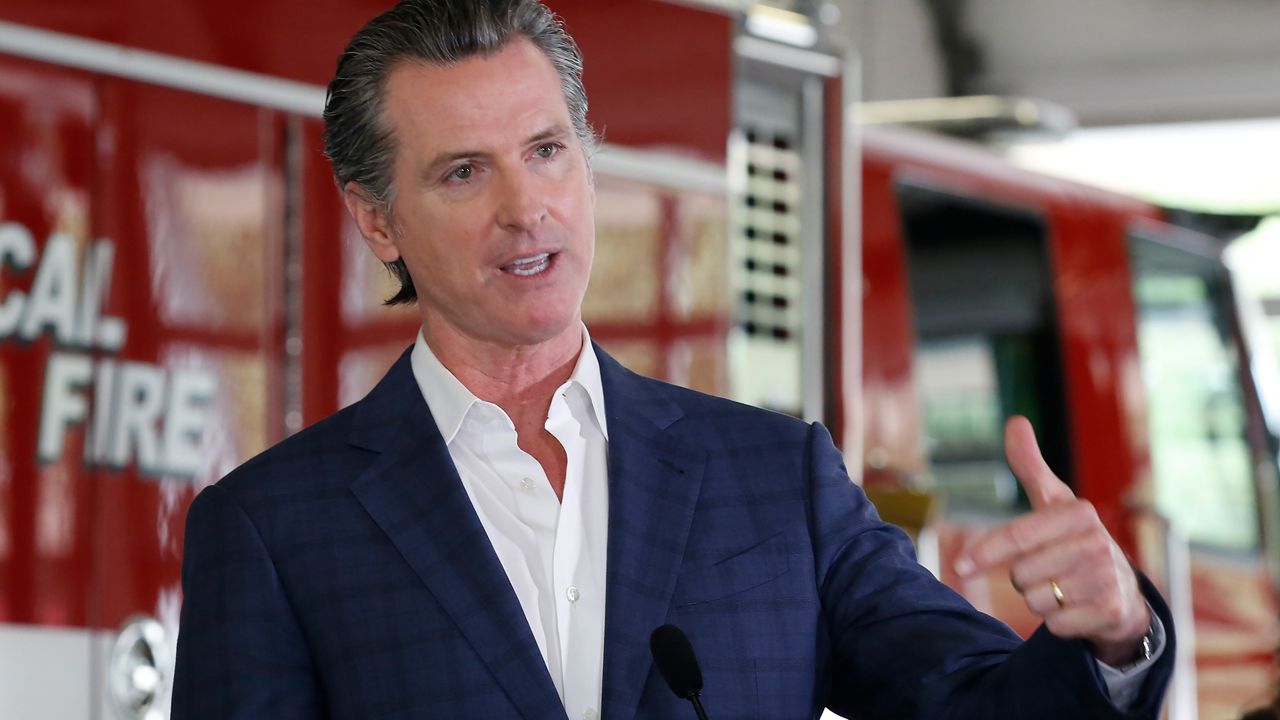SACRAMENTO, Calif. (AP) — Reflecting the drastic financial shortfall California is facing from the coronavirus pandemic, Gov. Gavin Newsom on Thursday proposed canceling $6.1 billion in spending increases that include nixing planned expansions of health coverage for vulnerable populations.
Newsom’s 2020-2021 budget estimates unemployment will climb to nearly 25 percent and overall tax revenues will drop by about a quarter. It also calls for a 10% pay cut for all state workers, including Newsom and his staff.
“Nothing breaks my heart more than having to make budget cuts,” he said. “There’s a human being behind every single number.”
K-12 schools will face financial challenges even as they are struggling to figure out how to hold in-person classes safely. So Newsom’s administration sought to soften the blow of $6.5 billion in cuts through federal coronavirus funding and reducing tax perks.
The $203 billion budget he proposed Thursday represents about 5% lower spending than the current year, despite a budget hole his administration pegged at $54.3 billion through next summer. That’s because many of the cuts come from planned expansions of safety net programs and social services he and other Democrats sought in the next year.
That includes canceling a plan to give government-funded health insurance to low-income adults 65 and older living in the country illegally, which saves $112.7 million.
Newsom’s budget also assumes that the federal government will give more coronavirus aid to states, something Republicans have warned is not a given.
“Depending on the federal government is not going to be a solution,” said Republican Sen. Jim Nielsen of Red Bluff.
The 10% pay cut for state employees would save about $2.8 billion overall, budget documents said, though the reductions would not occur “if the federal government provides sufficient funding to restore them.” The state will seek the savings through collective bargaining with the unions that represent different workers, but the administration will “impose reductions if the state cannot reach an agreement.”
“We will find efficiency. You deserve a leaner government that’s more nimble, more effective and targets the needs of the most vulnerable,” Newsom said.
Assemblywoman Lorena Gonzalez, a San Diego Democrat, said in a statement that the lowest-paid workers — who were barely making ends meet before this pandemic — can’t bear a reduction in salary.
California’s financial downturn is cushioned by a $16 billion rainy day fund set aside during the good times. Newsom’s budget, which will now be negotiated with the state Legislature, calls for spending the rainy day fund down over the next three years, starting with roughly $8 billion in the upcoming year. He’s also tapping two other reserve funds for another $1 billion.
His ambitious plans to help local governments tackle homelessness also appeared to take a hit. Under the revised budget, the state will use about $750 million in federal funding to buy hotels that are being used to house the homeless during the pandemic, and turn them over to local governments and nonprofits for permanent use. But he proposes cutting about $700 million in promised state funding for homeless social services.
“I am disappointed to see funding for cities to address homelessness eliminated,” said Democratic Assemblyman David Chiu of San Diego.
The state would also spend more than $200 million to boost the state’s preparations for looming wildfires and other disasters, including hiring another 500 firefighters and 100 support personnel to help make up for the loss of dozens of inmate firefighters who were paroled to ease the risk of coronavirus outbreaks.
State officials have furloughed state workers during previous budget deficits and used tricks like paying state employees a day later to save money during the last major recession. But Tim Edwards, president of the union representing state firefighters, said cuts to firefighters didn’t end up saving money because idled firefighters had to be backed up with replacements earning overtime.
“Being one of the lowest-paid fire departments already in California (compared to metro fire departments), pay cuts would not go well for us,” said Edwards, president of CalFire Local 2881.
Also on the list of proposed cuts are a 10% reduction to state universities and colleges, on top of eliminating a planned 5 percent increase next year and at least $280 million cuts to Medcaid, including eliminating a controversial plan to offer coverage to immigrants over 65 who are in the country illegally.
Newsom had proposed a $222.2 billion spending plan in January that included a nearly $6 billion surplus. But that changed in March, when he issued a mandatory, statewide stay-at-home order to slow the spread of the coronavirus that drastically reduced sales tax and other revenues and increased the number of people relying on safety net programs.



